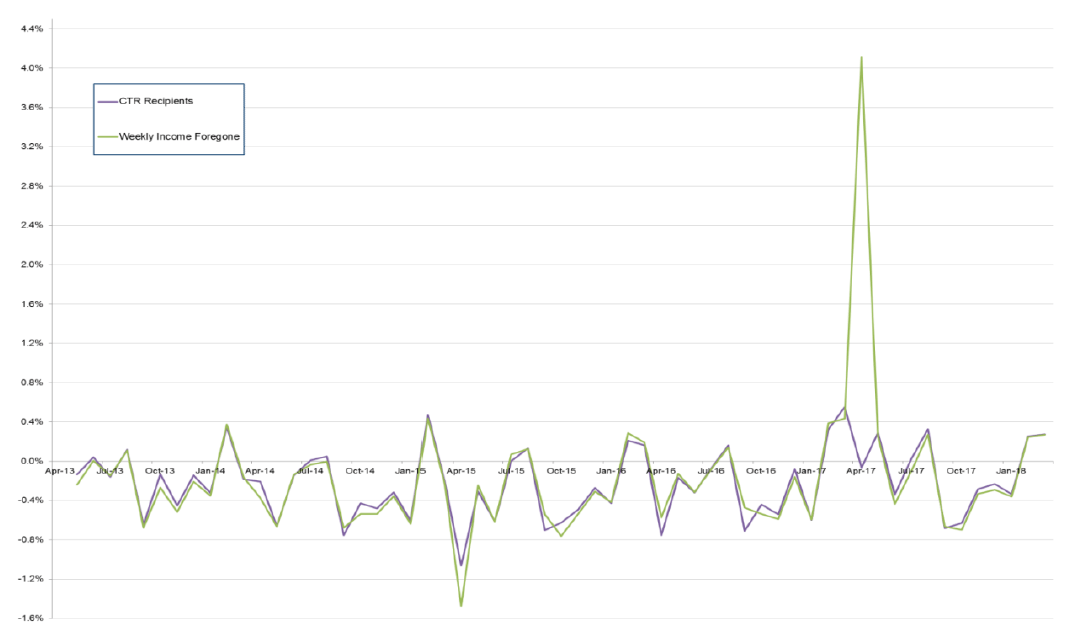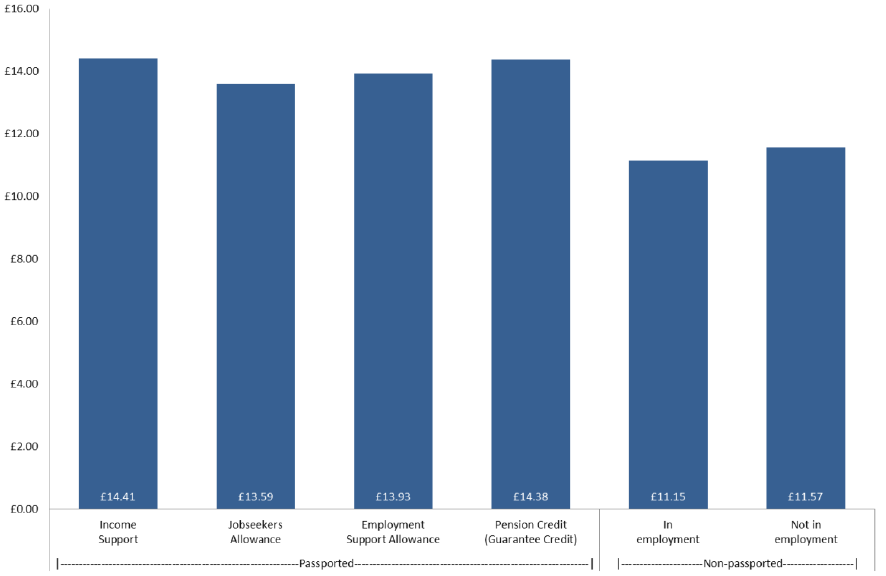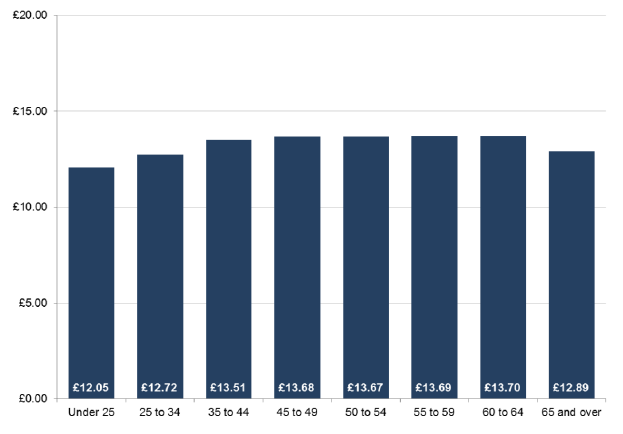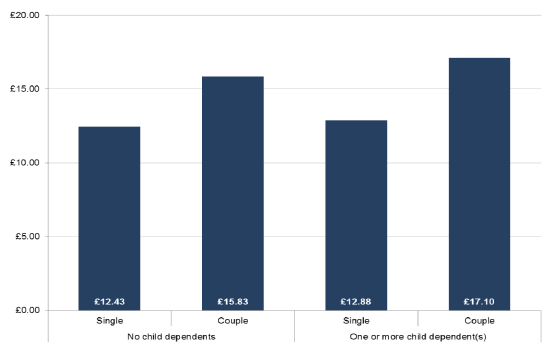Council Tax Reduction in Scotland 2017-2018
This publication provides statistics on the Council Tax Reduction (CTR) scheme, which reduces the Council Tax liability of low income households in Scotland.
3. Weekly Income Foregone Estimates
CTR caseload and Income forgone are reported quarterly and the following section provides the most recent quarterly update to the previous publication. The weekly income foregone estimates are based on the number of CTR claimants multiplied by the average weekly CTR reduction for each local authority and benefit type for the given month. When a local authority reduces a household’s Council Tax liability under the CTR scheme, it reduces the amount of Council Tax income it would otherwise be able to collect. Any reduction in Council Tax income therefore represents a reduction in the funding available to local authorities for providing services. The CTR scheme, like CTB, therefore represents a cost which is publicly funded. The total CTR weekly income foregone for Scotland was £6.4 million in March 2018. Local authority figures for January to March 2018 are given in Table 3.
Table 3: CTR weekly estimate of income foregone (£000’s) by Local Authority, January to March 2018 a, b, c
| Jan-18 | Feb-18 | Mar-18 | |
|---|---|---|---|
| Scotland | 6,357.0 | 6,372.7 | 6,390.0 |
| Aberdeen City | 186.9 | 187.5 | 189.1 |
| Aberdeenshire | 154.0 | 154.1 | 154.1 |
| Angus | 102.7 | 102.7 | 103.1 |
| Argyll and Bute | 100.0 | 100.9 | 102.4 |
| Clackmannanshire | 65.8 | 65.0 | 64.9 |
| Dumfries and Galloway | 162.8 | 163.5 | 164.4 |
| Dundee City | 229.5 | 229.7 | 230.8 |
| East Ayrshire | 167.3 | 168.7 | 169.5 |
| East Dunbartonshire | 83.3 | 82.8 | 83.2 |
| East Lothian | 94.3 | 94.3 | 94.2 |
| East Renfrewshire | 70.1 | 69.9 | 69.9 |
| Edinburgh, City of | 478.2 | 480.6 | 479.4 |
| Eilean Siar | 26.2 | 25.9 | 25.7 |
| Falkirk | 155.2 | 155.7 | 156.3 |
| Fife | 387.3 | 390.6 | 393.9 |
| Glasgow City | 1,285.1 | 1,285.2 | 1,286.7 |
| Highland | 235.5 | 235.5 | 235.7 |
| Inverclyde | 121.8 | 123.0 | 124.0 |
| Midlothian | 95.1 | 94.8 | 95.4 |
| Moray | 72.9 | 73.2 | 73.8 |
| North Ayrshire | 220.2 | 220.2 | 217.0 |
| North Lanarkshire | 431.7 | 431.6 | 433.8 |
| Orkney Islands | 14.3 | 14.5 | 14.8 |
| Perth and Kinross | 119.7 | 121.2 | 121.2 |
| Renfrewshire | 236.0 | 236.8 | 238.7 |
| Scottish Borders | 100.8 | 101.2 | 101.7 |
| Shetland Islands | 12.2 | 12.3 | 12.3 |
| South Ayrshire | 157.2 | 159.1 | 158.3 |
| South Lanarkshire | 368.9 | 370.6 | 372.4 |
| Stirling | 76.9 | 77.0 | 76.7 |
| West Dunbartonshire | 165.4 | 164.3 | 165.3 |
| West Lothian | 179.6 | 180.7 | 181.2 |
Notes:
a Claimants are as at monthly count date. See Methodology Notes, Section 2 for more details. Available at http://www.gov.scot/Topics/Statistics/Browse/Local-Government-Finance/Methodology/Ctaxreductionmethod
b Weekly income foregone estimates are based on ‘number of claimants multiplied by average weekly reduction’ for each local authority and benefit type for the given month.
c Figures are rounded to the nearest £100. Components may not sum to total due to rounding.
3.1 Weekly income foregone over time
The total weekly income foregone estimates for Scotland have decreased from £7.1 million in April 2013 to £6.4 million in March 2018. Income foregone estimates follow the same general pattern as the number of claimants, with the exception of April 2017 where there was a large increase in the income foregone when compared to March 2017 as the changes listed at the top of page 3 came into effect. With these changes established, subsequent month-on-month comparisons follow the previously observed pattern.
All local authorities have seen a decrease in their weekly estimates since April 2013. Furthermore, the number of CTR claimants and weekly income foregone have been closely linked, with most of the change in income foregone being driven by changes in the number of claimants. Chart 8 shows the month-on-month percentage changes in the number of claimants and the weekly income foregone for April 2013 to March 2018. The notable exception is in April 2017, as discussed above.
Chart 8: Month-on-month percentage change in CTR claimants and weekly estimates of income foregone in Scotland, April 2013 to March 2018

This chart shows month on month changes. So rather than a sustained increase in income foregone the chart spikes in April 2017. The Council and Monthly tables also published at the same time as this publication show a clear increase in the on-going costs of the scheme.
Other factors can affect the value of income foregone include Council Tax rates, age, structure of the population and household income. Chart 8 also shows small peaks in number of claimants and weekly income foregone at the beginning and middle of each calendar year, indicating a possible seasonal effect.
The weekly income foregone estimate for each local authority for each month between April 2017 and March 2018 are provided in the supplementary tables.
3.2 Average weekly awards by passported status
In March 2018, the average weekly award per CTR claimant was £13.19 per week. Average weekly award per claimant varied by both local authority and passported status; these figures are included in the supplementary tables.
Non-passported claimants who were in employment received the least on average per week at £11.15, compared to those on Income Support who received the most at £14.41. Passported income foregone will generally be higher as, by virtue of their income, these claimants will all be in receipt of full CTR. Chart 9 shows the average weekly award per claimant by passported status.
Chart 9: Average weekly award per claimants by passported status, March 2018

3.3 Average weekly awards by age and family type
Chart 10 shows the average weekly income foregone estimates by age group in March 2018. The under 25 age category had the lowest average weekly award at £12.05 followed by the over 65 age group at £12.89.
Chart 10: Average weekly award by age group, March 2018

Chart 11 shows the average weekly award by family type in March 2018. Single adults with no child dependents received the lowest average weekly award at £12.43 compared to couples with dependent children who had the highest average weekly award at £17.10.
Chart 11: Average weekly award by family type, March 2018

Contact
There is a problem
Thanks for your feedback